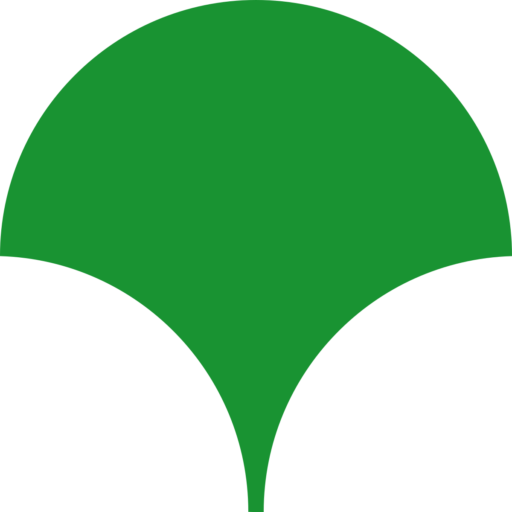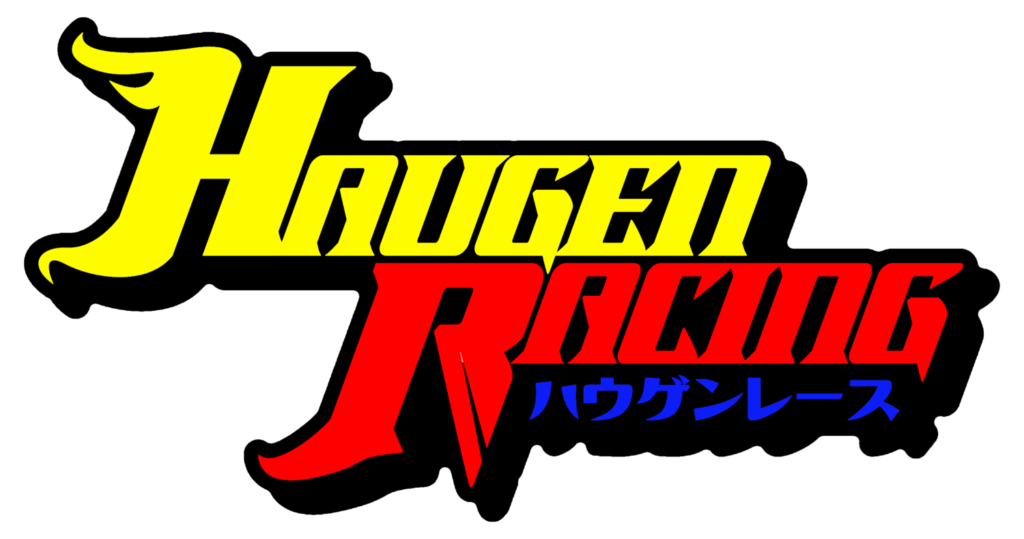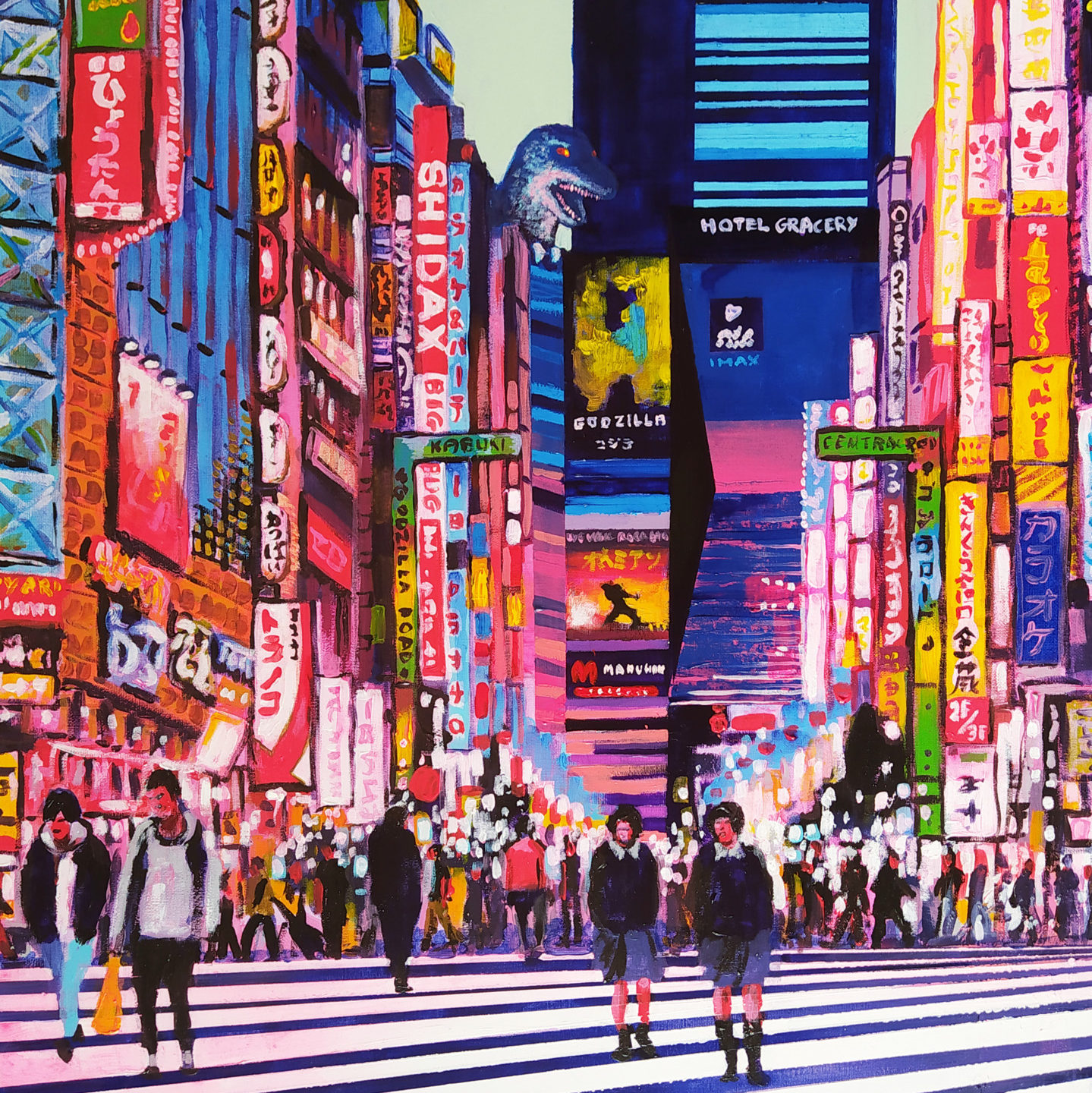Metropolitan crest
The Crest of the Tokyo Metropolis (東京都紋章, Tōkyō-to Monshō) was adopted on November 2, 1943, under the Metropolitan Announcement No. 464 (告示第464号). It is same as the crest of the former Tokyo City, decided by the city council in December 1889. It is believed to be designed by Hiromoto Watanabe (渡辺洪基, Watanabe Hiromoto), an alderman of the city.
The crest shows a six-rayed sun (which, as a red-filled circle without rays or a dot, is in the center of the national flag of Japan), with a dot in the center representing Tokyo as the metaphorical center of Japan. As with most other prefectural crests in Japan, its color is not designated. The crest can also be interpreted as a version of the kanji 京 (kyō) of 東京 (Tokyo), but the metropolitan announcement does not explain as such.
As a flag
The Flag of the Tokyo Metropolis (東京都旗, Tōkyō-to-ki) was adopted on October 1, 1964, under the Metropolitan Announcement No. 1042 (告示第1042号). It features a white Metropolitan Crest on center. The background color is Edo purple (江戸紫, Edo murasaki), which was popular in Edo, the name of Tokyo during the Edo period. This shade of purple is one of the traditional colors of Japan, and is near identical to Web Indigo the color used for the links on this site !.
Metropolitan symbol
The Symbol of the Tokyo Metropolis (東京都のシンボルマーク, Tōkyō-to no Shinboru Māku) was adopted on June 1, 1989, under the Metropolitan Announcement No. 577 (告示第577号).
The design was selected by the Tokyo Metropolitan Symbol Selection Committee (東京都シンボルマーク選考委員会) from 20 candidates. The winning design was created by Rei Yoshimura (レイ吉村), a professional graphic designer.

The vivid green symbol consists of three arcs combined to resemble a leaf of the ginkgo, the metropolitan tree, and represents T for Tokyo.
The Symbol Flag of the Tokyo Metropolis (東京都シンボル旗, Tōkyō-to Shinboru-ki) was adopted on September 30, 1989, under the Metropolitan Announcement No. 978 (告示第978号). It features a vivid green Metropolitan Symbol in its center. The background color is white.
TOKYO BY PLACES
EBISU
The Ebisu Circuit complex has seven individual tracks and two skid pad type circuits. The circuits are Nishi (West), Kita (North), Higashi (East), Minami (South) as well as Drift Land, the School Course, The Touge (mountain pass) and ‘KuruKuru Land’ which are the skidpads. The most famous circuit is the Minami or South course which is used for D1 Grand Prix and other drifting events. The Higashi or East circuit features a 420-meter-long main straight with 20 ground-floor pit garages and is used mainly for grip events.[1]
Ebisu Circuit was designed and built by the drift driver Nobushige Kumakubo and is one of the premier drifting-based race tracks in the world.[citation needed] Nobushige also holds other non-drifting motorsport events at Ebisu including motorcycle races, karting, endurance races, FJ1600 open-wheel car races and, in previous years, events like « Big-X ».[2] The complex also has a safari park.[citation needed]
In February 2021, the circuit suffered significant damage due to a landslide by the 2021 Fukushima earthquake.


SHINJUKU
Shinjuku (新宿区, Shinjuku-ku) is a special ward in Tokyo, Japan. It is a major commercial and administrative centre, housing the northern half of the busiest railway station in the world (Shinjuku Station) and the Tokyo Metropolitan Government Building, the administration centre for the government of Tokyo. As of 2018, the ward has an estimated population of 346,235, and a population density of 18,232 people per km2. The total area is 18.23 km2.[3] Since the end of the Second World War, Shinjuku has been a major secondary center of Tokyo (fukutoshin), rivaling to the original city center in Marunouchi and Ginza. It literally means « New Inn Ward ».
Shinjuku is also commonly used to refer to the entire area surrounding Shinjuku Station. The southern half of this area and of the station in fact belong to Yoyogi and Sendagaya districts of the neighboring Shibuya ward.
Lorem ipsum dolor sit amet, consectetur adipiscing elit. Pellentesque id ante egestas nibh placerat pellentesque ac in purus. Mauris nec quam ac enim condimentum interdum. Integer fringilla euismod dolor in tempus. Cras mattis felis vitae ligula tempor dapibus. Sed venenatis efficitur sollicitudin. Class aptent taciti sociosqu ad litora torquent per conubia nostra, per inceptos himenaeos. Vivamus interdum quam nulla, ac pharetra orci rhoncus quis. Donec dictum orci sit amet nibh tincidunt lacinia. Phasellus aliquam velit quis mattis malesuada. In auctor blandit metus, sit amet mollis elit scelerisque ut. Interdum et malesuada fames ac ante ipsum primis in faucibus. Fusce quis mi egestas urna elementum vulputate vulputate molestie diam.
Lorem ipsum dolor sit amet, consectetur adipiscing elit. Pellentesque id ante egestas nibh placerat pellentesque ac in purus. Mauris nec quam ac enim condimentum interdum. Integer fringilla euismod dolor in tempus. Cras mattis felis vitae ligula tempor dapibus. Sed venenatis efficitur sollicitudin. Class aptent taciti sociosqu ad litora torquent per conubia nostra, per inceptos himenaeos. Vivamus interdum quam nulla, ac pharetra orci rhoncus quis. Donec dictum orci sit amet nibh tincidunt lacinia. Phasellus aliquam velit quis mattis malesuada. In auctor blandit metus, sit amet mollis elit scelerisque ut. Interdum et malesuada fames ac ante ipsum primis in faucibus. Fusce quis mi egestas urna elementum vulputate vulputate molestie diam.
